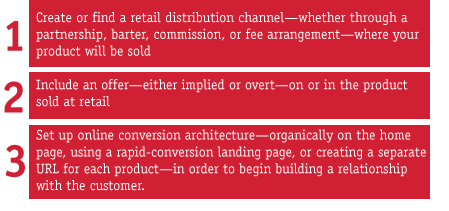Making money online by broadening retail distribution channels
Online sales figures for the $3.4 billion retail industry rose an impressive 23.8 percent in the first quarter of 2006 compared to the same period last year, according to the U.S. Census Bureau. Nevertheless, online sales represent a tiny 2.2 percent of total retail sales for the quarter.
So, while e-commerce may be booming in terms of its rate of growth or trend line, the actual sales figure is comparatively small—$19.8 billion for e-commerce sales vs. $917 billion in total retail sales for the quarter. Publishers who want to prosper selling ancillary products to consumers, therefore, should look to broaden their retail distribution channels rather than simply posting additional product offers on their e-commerce websites.
More importantly, broadening retail distribution channels enables a publisher to drive traffic to its own website by using someone else’s medium. Once that scenario is in place, the publisher is able to create a direct relationship with individual customers responding through those various retail channels by identifying them, understanding their interests, and then targeting specific, relevant offers to them—without going through a middle man.
Some publishers, in fact, already use retail distribution channels in the same way they’ve historically used direct mail or public relations. Rather than trying to generate revenue, they view product sales as a loss leader or break even source. Their primary objective is to build a database of qualified customers to whom they can sell directly.
Their reasoning? It’s a lot easier and less expensive to market your products if you can identify your best customers. And capturing customer information on your website is easy, inexpensive, and effective.
Making Retail Distribution Work for You – 3 Easy Steps
Driving traffic through a retail distribution source—whether a bricks-and-mortar retail store or a third-party e-commerce site—involves three specific steps:

Publishers are often very good at building partnerships with online or offline retail operations. They’re familiar with retail distribution as a channel for single-copy sales. Most fall down, however, on either Step 2 and/or Step 3. They don’t put offers for free products in with the products sold at retail and/or they don’t have effective conversion architecture on their websites.
To be successful at retail distribution, a publisher must deploy all three steps. Here are some tips for how to do that, along with examples of other publishers who have successfully used retail distribution channels to drive traffic to their websites.


